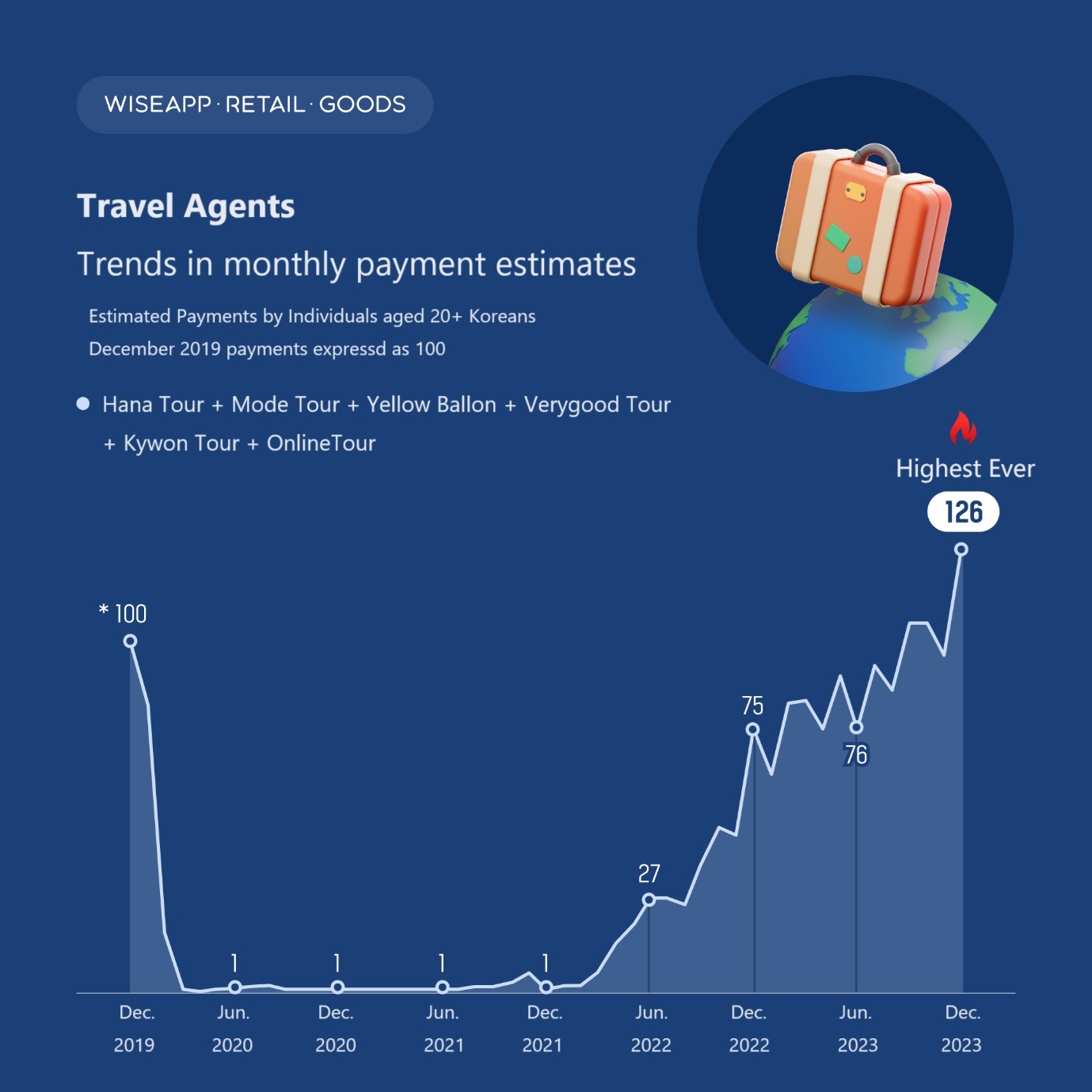
As the demand for international travel has increased since the end of the pandemic, the estimated payment amount of online international travel platforms, which mainly provide international travel services such as accommodation, leisure and activities, has approximately doubled since pre-COVID-19.
In December 2023, the total estimated payment amount of online international travel platforms (Booking Holdings (Agoda+Booking.com), InterparkTriple, Airbnb, Trip.com, EXPEDIA (Hotels.com+Expedia), MyRealTrip, and KKday) was $1.2 billion (KRW 1.6 trillion), about double the amount before COVID-19.
Online international travel platforms saw a sharp decline in estimated payments after the outbreak of COVID-19, reaching $98 million (KRW 130 billion) in March 2020, but after international travel began in earnest on 22 October, the number of estimated payments rose sharply, reaching $9.8 million (KRW 1.2094 trillion) in July 2023, the highest ever.

In December 2023, the airlines (Korean Air, Asiana Airlines, Jeju Air, Jin Air, T’way Air, Air Busan, Eastar Jet, and Air Seoul) recorded a combined estimated payment of $832.1 million (KRW 1.1083 trillion), surpassing the pre-COVID-19 recovery and the highest amount ever recorded.

In addition, tour operators (Hana Tour, Mode Tour, Yellow Ballon Tour, Verygood Tour, Kyowon Tour, and OnlineTour) fully recovered to the pre-COVID-19 level, with the payment volume in December 2023 increasing by 26% from December 2019.
The survey excludes business-to-business transactions, cash transactions, gift certificates, payments at directly managed hotels, and other small and medium-sized travel agencies, so the actual payment volume of online international travel platforms, airlines, and travel agencies is estimated to be higher.
The survey was conducted by app/retail analytics service WiseApp.Retail.Goods to estimate the amount of money spent by individuals aged 20 and over in South Korea using credit cards, debit cards, bank transfers and mobile phone micropayments, based on the details shown in the consumer’s payment history.







Leave a Comment